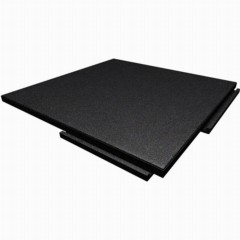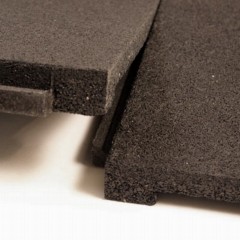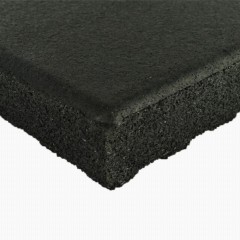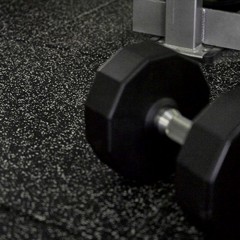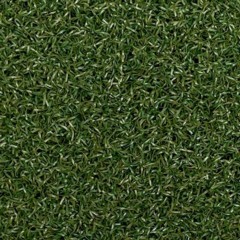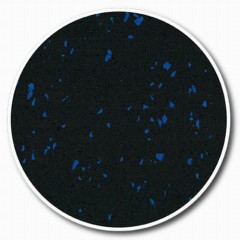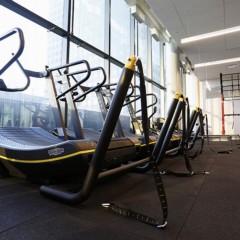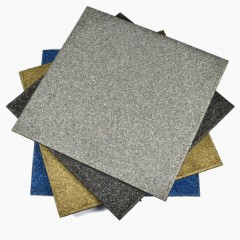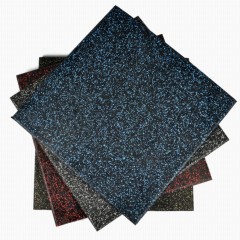Options for Sound Deadening Mats and Tiles for Gyms
When you want to cut down on noise in a fitness center, at-home workout room, weightlifting space, or commercial gym, sound deadening mats are a smart choice. They cut down on the impact of vibration and sound from heavy weights hitting the floor or from exercise machines.
Greatmats carries many types of sound dampening floor tiles. This isn’t a soundproof floor mat or a noise-canceling pad for the floor, but it greatly cuts down on noise that you may notice from the clanging weights and other gym equipment.
Types of Sound Dampening Floor Mats
We offer two types of sound dampening floor mats.
- Thick rubber tiles: Thick rubber tiles don’t quite qualify as soundproof rubber flooring, but these sound-deadening mats come close, especially when you select models that are 2 inches thick or thicker.
- Turf tiles with a thick rubber base: If you prefer the look of artificial turf in your gym, consider our tiles with a turf top layer and thick rubber base layer.
Features for Sound Absorbing Floor Mats
Some of the key features of the different sound-absorbing floor mats from Greatmats include:
Where to Use Sound Deadening Floor Tiles
Some of the most common uses for our sound-deadening floor tiles include:
- Workout facility
- Fitness center
- School weight room
- Strength training areas
- Cross fit training areas
- Weightlifting area
- Commercial gymnasium
- Home gymnasium
- Underneath exercise machines
- Indoor playground
Benefits of Sound Dampening Floor Tiles
Some of the key gym mat sound-absorbing benefits that our products offer include:
- Sound deadening mats yield a reduction in decibels generated during workouts
- Muffles the loud bangs from dropping weights
- Thick interlocking flooring provides cushioning during workouts
- Durable rubber flooring lasts a long time
- Some tiles include color flecks for improved look
- Easy-to-clean flooring
- No need for extensive maintenance techniques
- Doesn’t clearly show wear and tear
Sound Deadening Mats Q&A
How did CrossFit Goose Creek reduce noise in their gym?
CrossFit Goose Creek reduced noise in the gymnasium by installing
Sterling Athletic Rubber Tiles that absorbed noise and allowed them to avoid causing unwanted sound for their neighboring business.
How do you eliminate noise complaints from cross fitness gyms?
To
eliminate noise complaints about cross fitness gyms, install a type of flooring that reduces unwanted banging and echoing sounds. Rubber tiles made for athletics won’t be a 100% soundproof gym flooring, but they’re proven to greatly cut down on excess noise.
What is the best noise-resistant flooring?
The
best noise-resistant flooring includes materials consisting of rubber, foam, and cork. In a gymnasium, rubber floors are the best way to stand up to tough conditions, like weightlifting, while reducing unwanted sound.
Do you need weightlifting drop pads?
Yes, you may
need weightlifting drop pads if you don’t have a protective layer installed that protects your floor from dropped weights. The drop pads add an extra layer of insulative protection and reduce noise even further.
How did CrossFit Duluth find noise-reducing Xfit gym flooring?
CrossFit Duluth needed noise reduction and sound deadening mats before it could sign a lease for its gym space. After doing extensive research, the owner decided to buy
2.75-Inch Sterling Rubber Tiles from Greatmats because of the selection and price offered.
 $10254 /Tile You Save 19%$25.64/sqftShop$9709 /Tile You Save 19%$24.27/sqftShop$8845 /Tile You Save 19%$22.11/sqftShop$3875 /Tile You Save 17%$9.69/sqftShop$3875 /Tile You Save 17%$9.69/sqftShop$3358 /Tile You Save 17%$8.40/sqftShop$5510 /Tile You Save 18%$13.78/sqftShop$6027 /Tile You Save 17%$15.07/sqftShop$5510 /Tile You Save 18%$13.78/sqftShop$6027 /Tile You Save 17%$15.07/sqftShop$5683 /Tile You Save 17%$14.21/sqftShop$6199 /Tile You Save 18%$15.50/sqftShop$4649 /Tile You Save 18%$11.62/sqftShop$5080 /Tile You Save 17%$12.70/sqftShop$4976 /Tile You Save 20%$12.44/sqftShop$3922 /Tile You Save 20%$9.81/sqftShop
$10254 /Tile You Save 19%$25.64/sqftShop$9709 /Tile You Save 19%$24.27/sqftShop$8845 /Tile You Save 19%$22.11/sqftShop$3875 /Tile You Save 17%$9.69/sqftShop$3875 /Tile You Save 17%$9.69/sqftShop$3358 /Tile You Save 17%$8.40/sqftShop$5510 /Tile You Save 18%$13.78/sqftShop$6027 /Tile You Save 17%$15.07/sqftShop$5510 /Tile You Save 18%$13.78/sqftShop$6027 /Tile You Save 17%$15.07/sqftShop$5683 /Tile You Save 17%$14.21/sqftShop$6199 /Tile You Save 18%$15.50/sqftShop$4649 /Tile You Save 18%$11.62/sqftShop$5080 /Tile You Save 17%$12.70/sqftShop$4976 /Tile You Save 20%$12.44/sqftShop$3922 /Tile You Save 20%$9.81/sqftShop